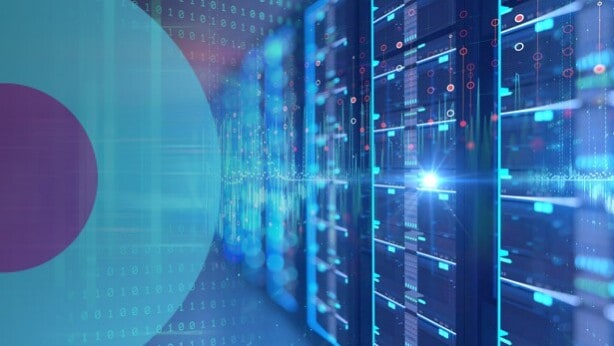
Benefits of an edge strategy
The first thing to know is that edge offers a lot of advantages.
“Edge computing allows companies to move processing functions closer to where data is gathered –at the network edge, providing a competitive advantage through speed, scale, and security,” said Gene De Libero, chief strategy officer at GeekHive.com (@GeneDeLibero).
This approach reduces the latency that occurs when communicating with a remote data center. The latency issue will become more pronounced as edge data volumes grow. and as the volume of data from edge devices grows. IDC estimates that data creation at the edge is growing almost as fast as data in the cloud, and predicts that edge data will account for 22% of the total global “datasphere” by 2025
“Typical cloud computing models rely on vast amounts of data to be sent hundreds or thousands of miles to be sorted out on the server end,” said Scott Schober, President and CEO of Berkeley Varitronics Systems (@ScottBVS). “This leads to lots of redundant or wasted bandwidth as well as higher latency due to the travel and processing time of all that data.”
In general, it’s a difference of seconds vs. microseconds. The need for that kind of speed is critical for certain applications.
“The difference would be considered huge in the financial industry, which uses blockchain technology for transactions, or in the health industry, where a fraction of a second latency could mean the difference between life and death,” said data analyst Benjamin Ajibade (@Benni_aji).
Reduced latency can also help on the manufacturing floor, where near-real-time analysis of operations and equipment can improve efficiency and increase margins.
“Manufacturers, industrials, government, retail, and other companies that require low-latency, high volume, and high-reliability apps and data processing can use edge computing technologies to develop new, innovative experiences,” said Isaac Sacolick, president of StarCIO (@nyike).
Better customer experiences
While these advantages are important, the biggest driver of edge computing may wind up being a basic human characteristic: impatience.
“Customers expect better performance—no hiccup in a videoconference, no lag in your online game, no glitch in your shopping experience,” said Jo Peterson, an IT executive and member of the Forbes Technology Council (@digitalcloudgal). “These are current expectations and not aspirations. For certain verticals that are serving data up to clients, the question becomes, how do you successfully compete without utilizing the edge?”
Scott Zoldi, chief analytics officer at FICO (@ScottZoldi), wholeheartedly agrees: “I am laser-focused on low-latency streaming decisioning, because customers increasingly expect real-time insights where computation is occurring, where data is captured vs. centralized.”
That said, edge computing is not for every use case.
“For companies that need low latency, edge computing is excellent. But many firms, if not most, do not require that level of speed,” saidBen Rothke, senior information security manager at Tapad (@benrothke). For those organizations, he said, edge computing may be “overkill.”
Business requirements and ROI
So, how do you sharpen your IT perspective on the edge? First, don’t get caught up in the hype and shininess – the basics still apply. Make sure your ROI model is based on time-tested rules of evaluation and execution.
“Edge –like cloud – is a new-ish business model for tech,” said Executive Digital Advisor Joanna Young (@jcycio). “When CIOs are considering [an edge strategy], in addition to understanding the tech implications, be sure to understand the financial and process implications also.”
This sentiment is echoed by Will Kelly, technical marketing manager for a container security startup (@willkelly): “Do your homework so you can cut through the marketing hype and educate your stakeholders about edge computing in business terms.”
That “homework” includes determining the right use cases and making sure your infrastructure and systems can support edge applications and workloads.
“Before going on an ‘edge journey,’ do a thorough analysis of which applications require real-time computing and data storage for the end-user,” said Arsalan Khan, an advisor on business and digital transformation (@ArsalanAKhan). “Does the end-user even care about real-time?” He also suggests an analysis of edge and endpoint devices to make sure they can handle real-time processing.
As with any new technology, it’s also important to use an edge initiative as an opportunity to improve existing processes and workflows instead of exacerbating existing inefficiencies.
“If edge compute proliferates and perpetuates application and data silos, it could just add to the accumulating debt,” said Matt Turner, Director, Industry Strategy at Alation (@matt_turner_nyc). “But with some control, it can actually help solve the problem.”
And keep in mind, edge isn’t going to replace cloud or central data centers; it augments them by cutting back on demand and by providing more data for analyses. ”Even though a lot of processing is done on the edge, having a central storage repository to analyze ‘cross-planetary’ data using AI or other business intelligence platforms will still be critical,” said Frank Cutitta, CEO and Founder of HealthTech Decisions Lab (@fcutitta).
A foundation for innovation
In addition to increased efficiency and performance , edge computing can also position an organization to leverage new and emerging technologies for future innovations.
“Integrating edge computing sooner rather than later moves organizations into real-world readiness for augmented reality, AI, and machine learning-empowered decision making,” said Audrey DeSisto, founder of Digital Marketing Stream (@AudreyDesisto).
That’s the edge many organizations have been waiting for.






























